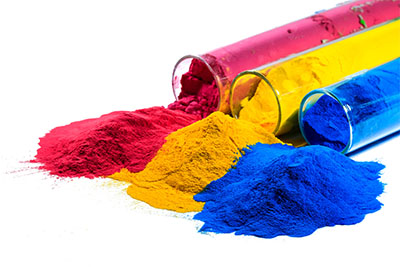
Pigment and Dye Applications for Wet & Dry Grinding Mills
Pigments and dyes both change the perceived color of an object by altering reflected and absorbed light – the varying wavelengths of light that are reflected produce the color that is seen.
Both have also been used for thousands of years. Textile dyeing dates to at least 65,000 years ago, while evidence of pigment usage has been traced back to between 350,000 and 400,000 years ago.
But there are also important distinctions between pigments and dyes. Pigments result in a suspension because they are insoluble in their vehicle, while dyes are either liquid or result in a solution because they’re soluble in their vehicle.
Dyes also chemically bond with the material they color, while pigments don’t. Pigments generally are longer lasting than dyes and are more resistant to high heat, intense light, weathering and chemical agents.
Pigments are used in paints, inks, plastics, fabrics, cosmetics, and food, among other applications. Dyes are used in many of the same applications as well as textiles. They’re also used as contrast dyes in magnetic resonance imaging.
Ultrafine grinding is used to process both pigments and dyes. Because of its relationship to particle sizes, surface chemistries and degrees of agglomeration, grinding has a direct effect on the efficacy of pigments and dyes.
Union Process has developed two dry grinding Attritors, the SD Series and the HSA Series, as well as our wet grinding batch Attritor S Series, that are especially well-suited for pigments and dyes.